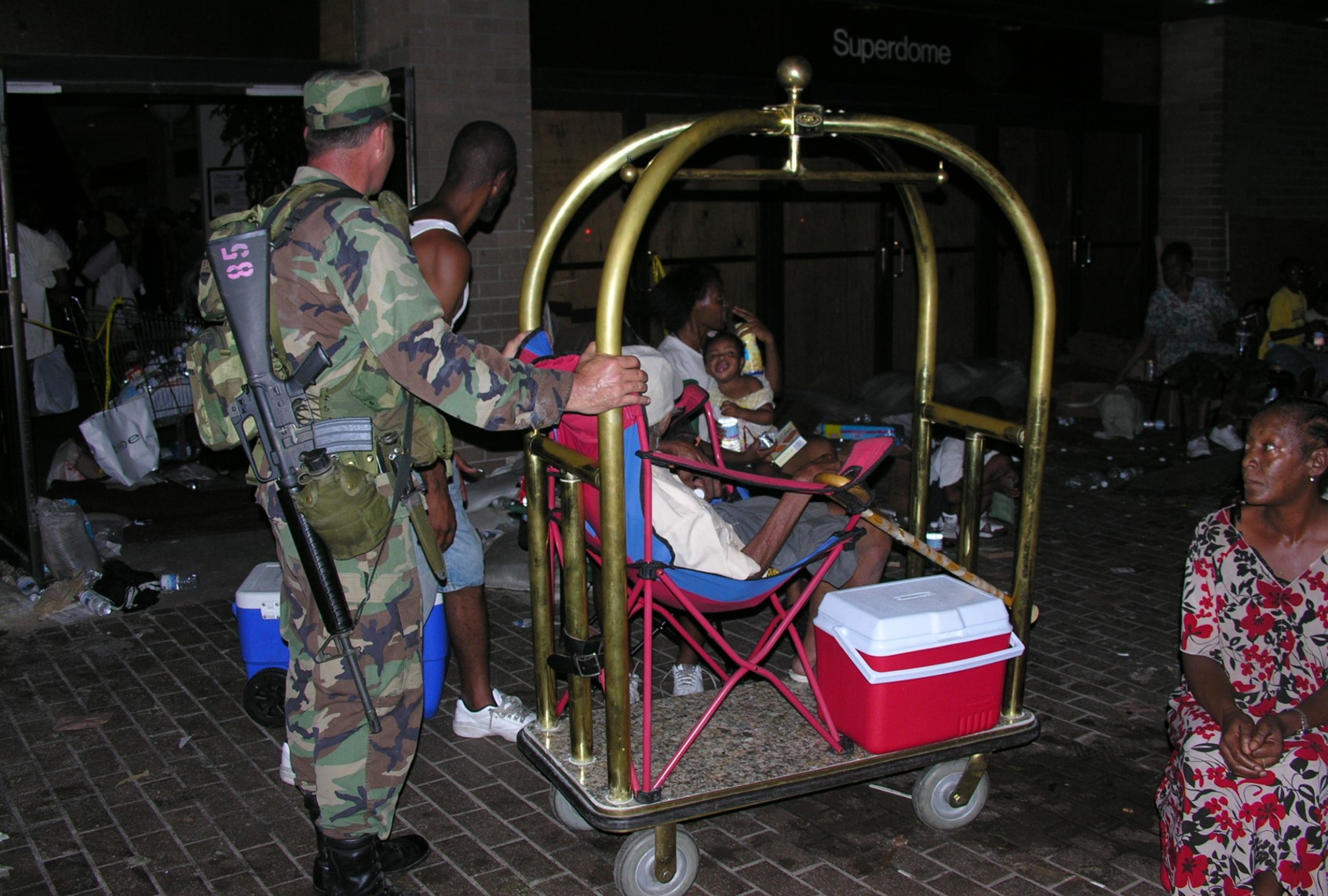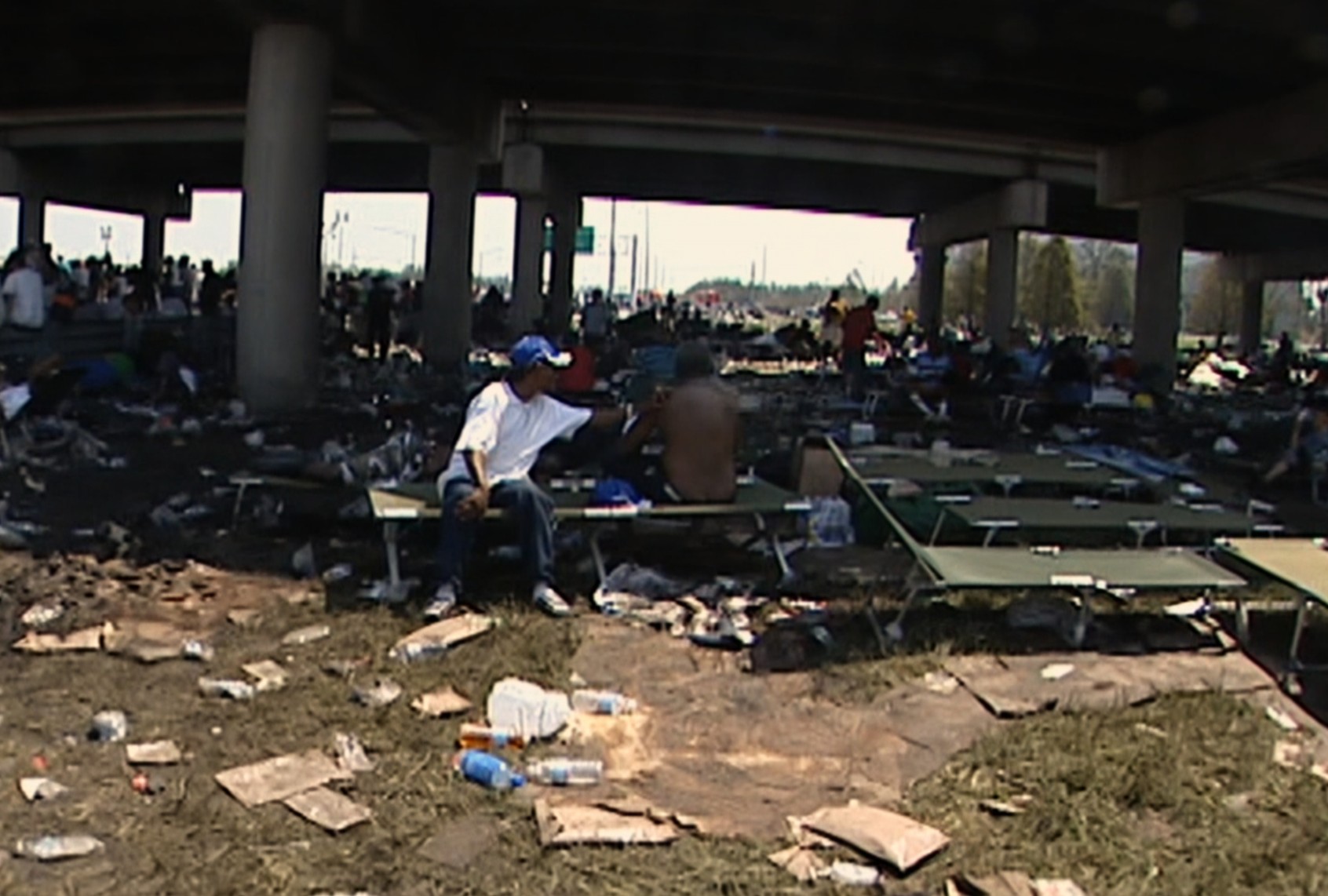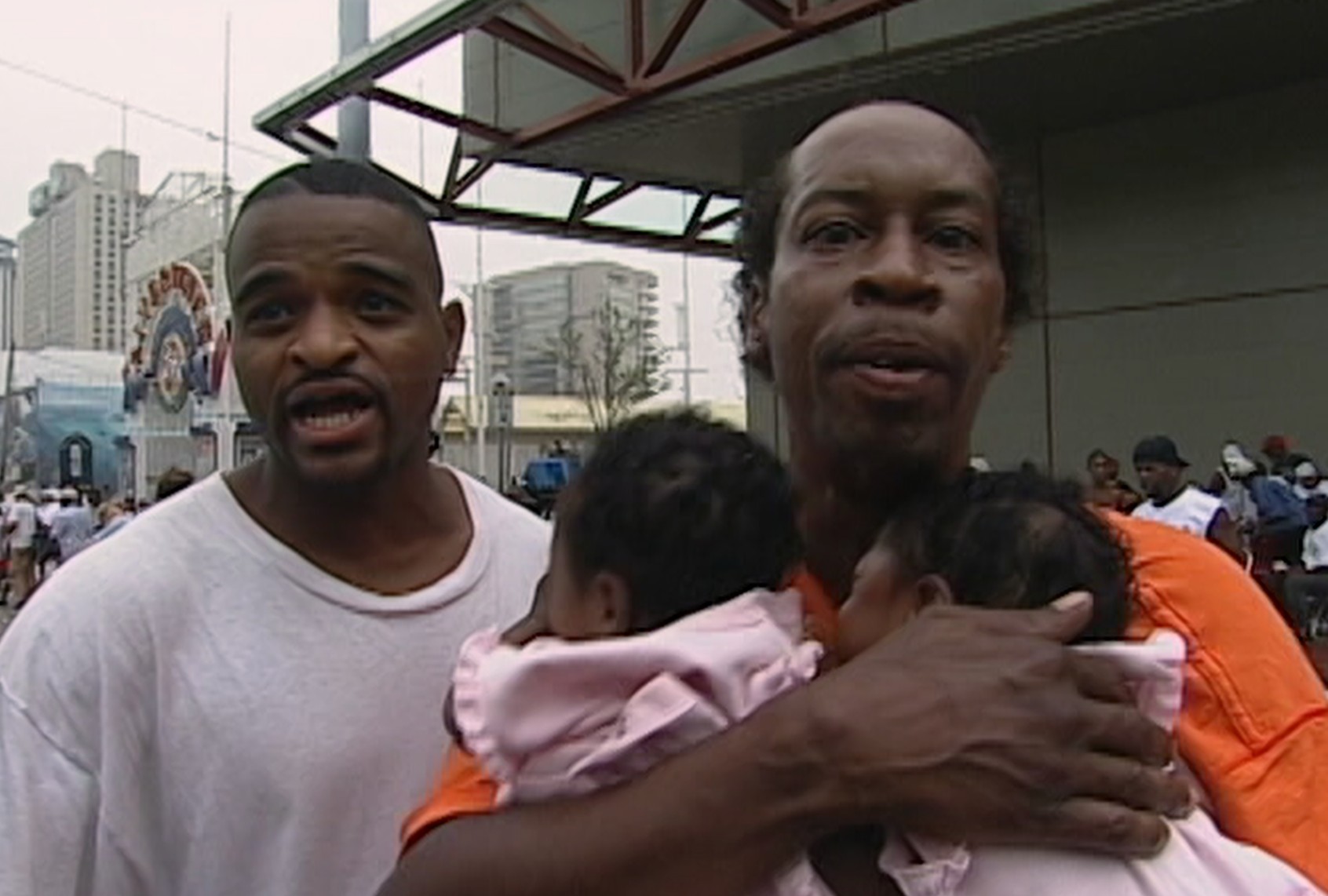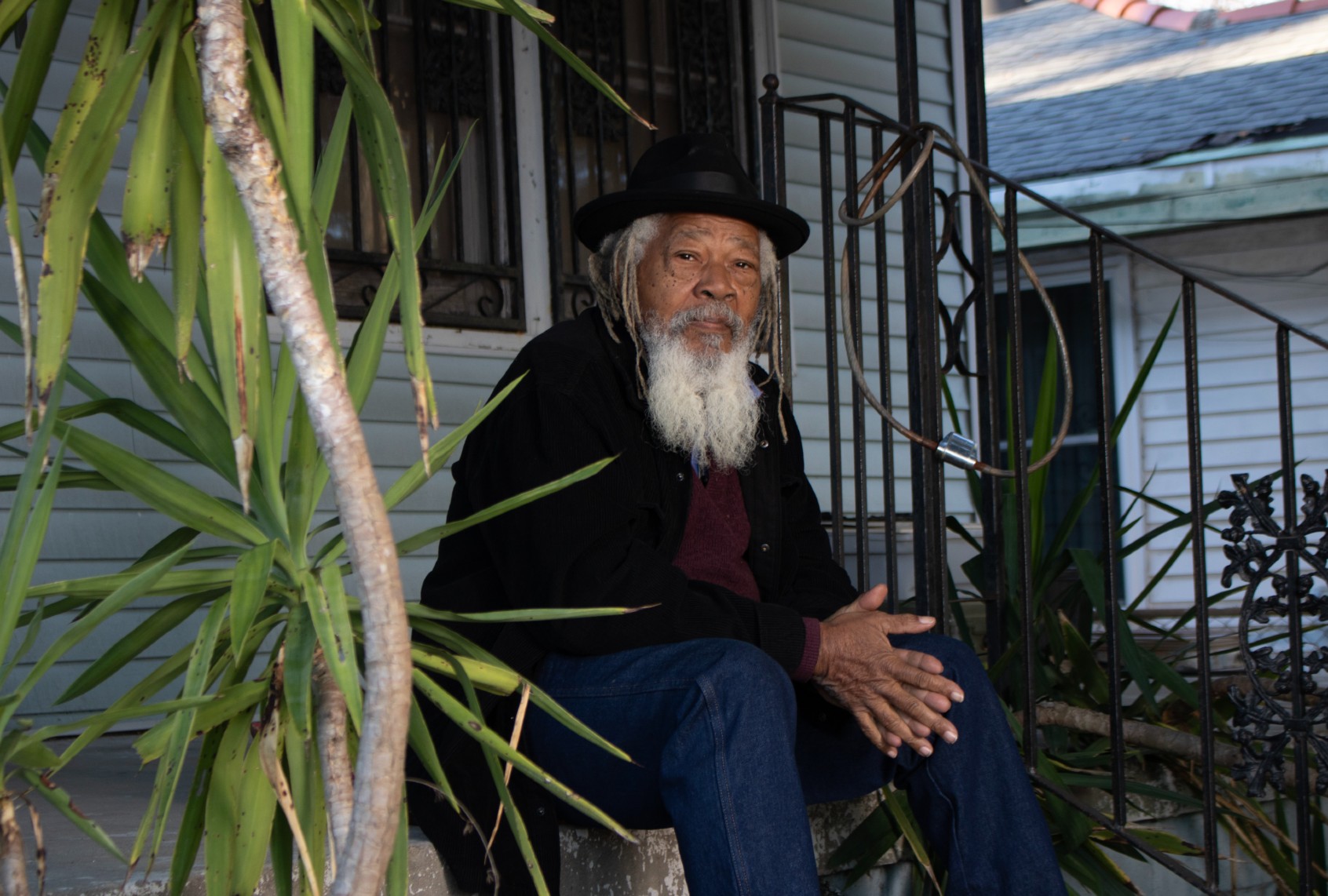“What makes a disaster a tragedy? A tragedy is when we fail to do what we should be doing.”
This is how New Orleans community organizer Malik Rahim prefaces the calm before “Hurricane Katrina: Race Against Time” plunges into one of the deadliest storms in American history.
Unless you were there, you might think he’s referring to the levee failures that doomed New Orleans. Subsequent studies placing the blame on the Army Corps of Engineers’ shoddy construction have been amply covered.
The most significant lack Katrina revealed is an empathy deficit among America’s citizens.
This could also be a nod at the city’s failure to coordinate an exit plan for the 100,000 people who would have no safe harbor and few, if any, resources to leave the city. In the first episode of the five-part docuseries, Rahim calls this the first tragedy of Katrina. The list will be achingly long.
August 29 marks 20 years since Katrina ripped through the City That Care Forgot, and the intervening decades have yielded impassioned examinations of what went wrong. Spike Lee’s “When the Levees Broke” debuted in 2006, when the city was still in tatters. He followed that in 2010 with the Peabody Award-winning “If God Is Willing and da Creek Don’t Rise.” That same year gave us David Simon and Eric Overmyer’s HBO drama “Treme. Two years before that, Tia Lessin and Carl Deal co-directed 2008’s critically acclaimed “Trouble the Water.”
The Katrina documentary filmography is more extensive than this, and is likely to grow as the anniversary ticks closer. But one wonders whether they’ll come close to matching the visceral wake-up call “Hurricane Katrina: Race Against Time” represents.

(Ed Bush) Military members push an elderly person in a bellhop cart outside the Superdome after Hurricane Katrina, in New Orleans, La.
Rahim isn’t just talking about governmental incompetence. He’s talking about the failure to recognize the consequences of climate change manifesting in the surrounding wetlands’ die-off. That, and the media’s irresponsible portrayal of common desperation as criminal, leading to dangerous fearmongering.
But the most significant lack Katrina revealed is an empathy deficit among America’s citizens. With pundits like Fox’s Bill O’Reilly calling for starving people scavenging for supplies to be shot and their own elected officials branding them “thugs” and “looters,” it became perfectly understandable for the government to put off rescuing thousands of suffering survivors.
When people in surrounding parishes and racist vigilantes took up guns against their neighbors, that was understandable. When the supposed recovery turned out to be a land grab designed to strip the city’s poorest and overwhelmingly Black population of its hard-won equity, that was the price of New Orleans’ glorious rebirth.
What becomes abundantly clear by the end of “Race Against Time” is that the title isn’t talking about the past, although director Traci A. Curry uses ominous timestamps to give chronological structure to subjects’ testimonials. The race, it warns, is ongoing. The disaster is here, nationwide and steadily inching toward tragedy. The bigotry and classism it laid bare is now a societal feature, not a bug.
Helping to surface documentaries like this is part of my job, and it’s also an effort that tends to be overlooked. People don’t want to be reminded of the world’s terrible state when they feel powerless to do anything other than pray that catastrophe never reaches their doorstep.
But the warning of “Hurricane Katrina: Race Against Time” is dire and should be considered right now. Cable news coverage during Katrina revealed that the rich and poor reside in very different Americas, and the fortunate would rather not contend with that. An estimated 1,392 people died as a result of Katrina, but it sure felt like more of us gasped at the $125 billion worth of damage. Twenty years later, the wealth gap is a chasm our politicians are turning into a canyon, with more of us stranded on the drowning side.
These agencies, particularly FEMA, may have failed New Orleans in 2005, but soon they might not exist at all.
Katrina was also a testing ground for disinformation proliferation. We have since lived through Hurricane Maria ripping apart Puerto Rico in 2017, Hurricane Helene washing away communities across the Southeastern seaboard in 2024, and sudden flash floods in Texas earlier this month. Puerto Rico, largely forgotten in disaster conversations, still hasn’t fully recovered.
After Helene, then-GOP presidential candidate Donald Trump and vice president JD Vance amplified right-wing misinformation that hampered the government’s disaster response, purely for political gain.
Now that he’s back in office, Trump’s administration is moving toward dismantling the Federal Emergency Management Agency. This is in addition to cutting the National Oceanic and Atmospheric Administration’s budget and pushing the privatization of the National Weather Service. These agencies, particularly FEMA, may have failed New Orleans in 2005, but soon they might not exist at all. Trump recently suggested that governors should be able to handle the next natural disaster on their own.

(KTVT - TV) Stranded New Orleans residents gather underneath the interstate following Hurricane Katrina in 2005.
Meanwhile, Trump’s “big, beautiful bill” pumps $178 billion into anti-immigration measures over the next decade, with the biggest beneficiary being U.S. Immigration and Customs Enforcement. As our federal disaster management apparatus shrivels, ICE is positioned to become the largest US federal law enforcement agency in history.
“Imagine what FEMA, NOAA and the NWS could do with the $178 billion Trump has pumped into immigrant raids and constructing concentration camps in the Everglades courtesy of the bloated ICE budget in the big, beautiful bill that is now a law,” Salon White House columnist Brian Karem aptly observed.
Well, this docuseries eliminates much of the need for imagination. In a better world, the government would take concrete measures to protect its people from predictable, recurring hazards instead of throwing our tax dollars at goons running down children in a city park. This, amid 2025’s hurricane season.
“Hurricane Katrina: Race Against Time” is executive produced by Lightbox and Ryan Coogler and comes to us at a time when “Sinners” has elevated his profile. But this production ensures that the perspectives from New Orleans’ people matter most. Folks like Shelton Alexander provide a citizens’ view of what happened through the footage they had the foresight to record. Alexander, a lower Ninth Ward resident and slam poet who visually diarized his life in normal circumstances, caught every moment of the worsening storm from its beginning through the gruesome experience inside the Superdome, where residents with nowhere else to go found shelter from the storm, until huge sections of the roof blew off and conditions within made it no safer than the conditions outside.
The docuseries’ insistent focus on placing the survivors’ histories first leaves it to the first responders who were on the ground to sort the mess from a logistical point of view.
Start your day with essential news from Salon.
Sign up for our free morning newsletter, Crash Course.
People like Ed Bush, a major in the Louisiana National Guard in 2005, lament the emphasis on protecting property instead of helping people, as they were eventually ordered to do. Others, including Tremé resident Lynette Boutte, were forced from their home by the military despite it being higher than the floodwaters. Boutte was forced to walk through filthy waters only to find there were no safer places and no way to escape the city. At least she lived to share her story.
Some officials’ testimonials are tinged with the benefit of hindsight and shadows of regret, although Joint Task Force commander Lt. General Russel Honoré remembers his mission with a bracing fury. Honoré tried to be a steadying force in a misinformation maelstrom and found himself veering between comforting the sickly and frightened and talking down heavily armed military forces training their guns on harmless flood victims. The sole representative from former Mayor Ray Nagin’s office, his PR flak Sally Forman, does her job incredibly well even now, eloquently passing the buck to people who aren’t available to explain themselves.

(ABC News) New Orleans resident Kevin Goodman holds his two baby nieces while seeking help from reporters in the face of the dire conditions at the Convention Center after Hurricane Katrina in 2005.
Placing blame on figures aside from the deserving is not the series’ aim; besides, the incompetents out themselves just fine in archival replays. FEMA head Michael Brown botched the job so blatantly in front of news cameras that he resigned weeks after the main crisis subsided, going on to host a conservative radio show in Denver.
Accounts from participating officials don’t allow us to forget that Nagin was complicit in accelerating a frightening situation, or that Louisiana Governor Kathleen Blanco encouraged violence against her constituents. (Nagin went on to serve 10 years in prison following his 2014 conviction on federal bribery, money laundering and corruption charges. Blanco died in 2019.)
We need your help to stay independent
But these are whispers in the winds of what Rahim accurately describes as a hurricane of governmental failure, mistruth and injustice. That adds extra freight to his reminder that Katrina’s tragedy was entirely manmade — a whirlpool of failed levees, systems and common bloodthirsty inhumanity. And it seems the only lesson we’ve learned is that the government’s handling of our next preventable tragedy is likely to be a lot worse because our callous partisanship willed it to be so.
“Hurricane Katrina: Race Against Time premieres with three back-to-back episodes at 8 p.m. Sunday, July 27 on National Geographic. All episodes stream the next day on Disney+ and Hulu.
Read more
about this topic


